Suborder Archaeoceti
Family Ambulocetidae
(Eocene)

Family Basilosauridae
(Late Eocene)
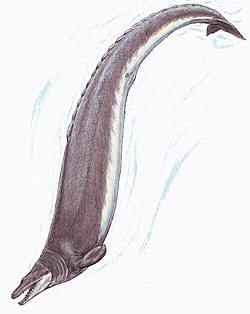
Family Kekenodontidae
(Oligocene)
Family Pakicetidae
(Early to Middle Eocene)
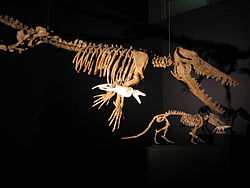
Family Protocetidae
(Eocene)

Family Remingtonocetidae
(Eocene)
The list of extinct cetaceans features the extinct genera and species of the order Cetacea. The cetaceans (whales, dolphins and porpoises) are descendants of land-living mammals, the even-toed ungulates. The earliest cetaceans were still hoofed mammals. These early cetaceans became gradually better adapted for swimming than for walking on land, finally evolving into fully marine cetaceans.
This list currently includes only fossil genera and species. However, the Atlantic population of gray whales (Eschrichtius robustus) became extinct in the 18th century, and the baiji (or Chinese river dolphin, Lipotes vexillifer) was declared "functionally extinct" after an expedition in late 2006 failed to find any in the Yangtze River.
(Eocene)

(Late Eocene)

(Oligocene)
(Early to Middle Eocene)

(Eocene)

(Eocene)
(Late Eocene-Early Oligocene)
(jr synonym Janjucetidae)

(Late Oligocene)
(Oligocene)

(Oligocene to Miocene)
(Oligocene to early Miocene)
(Miocene)
(Miocene to Recent)
(Miocene - Pliocene)
Classification follows Steeman (2007) unless otherwise noted. [14]


(Miocene to Pliocene)
(Miocene to Recent)
(Miocene)
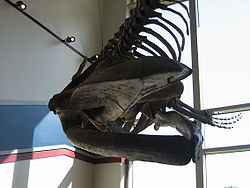
(Miocene to Recent)
(Miocene to Recent)
(Early Oligocene)
(Early Oligocene)
(Oligocene to Early Miocene)
(Early Oligocene)
(Late Oligocene)
(Late Oligocene to Early Miocene)
(Late Oligocene to Miocene)
(Late Oligocene-Middle Miocene)
(Miocene to recent)
(Late Oligocene to Early Miocene)
(Miocene)
(Late Oligocene to Late Miocene)
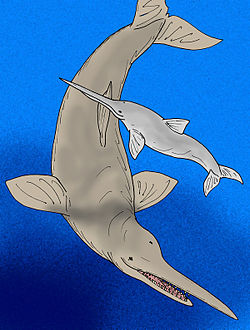
(Late Oligocene to Middle Miocene)

(Early Miocene to Recent)
(Late Oligocene to Middle Miocene)
(Late Oligocene to Middle Miocene)
(Late Oligocene to Early Miocene)
(Miocene to Recent)
(Miocene to Pliocene)

(Oligocene to Recent)
(Oligocene to Pliocene)

(Miocene to Recent)
(Late Miocene to Early Pliocene)
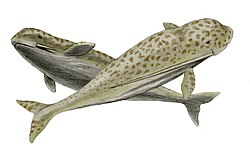
(Miocene to Recent)
(Miocene to Recent)
(Middle Miocene to Recent)
(Late Miocene to Recent)
{{cite journal}}: CS1 maint: DOI inactive as of July 2025 (link){{cite journal}}: CS1 maint: numeric names: authors list (link)